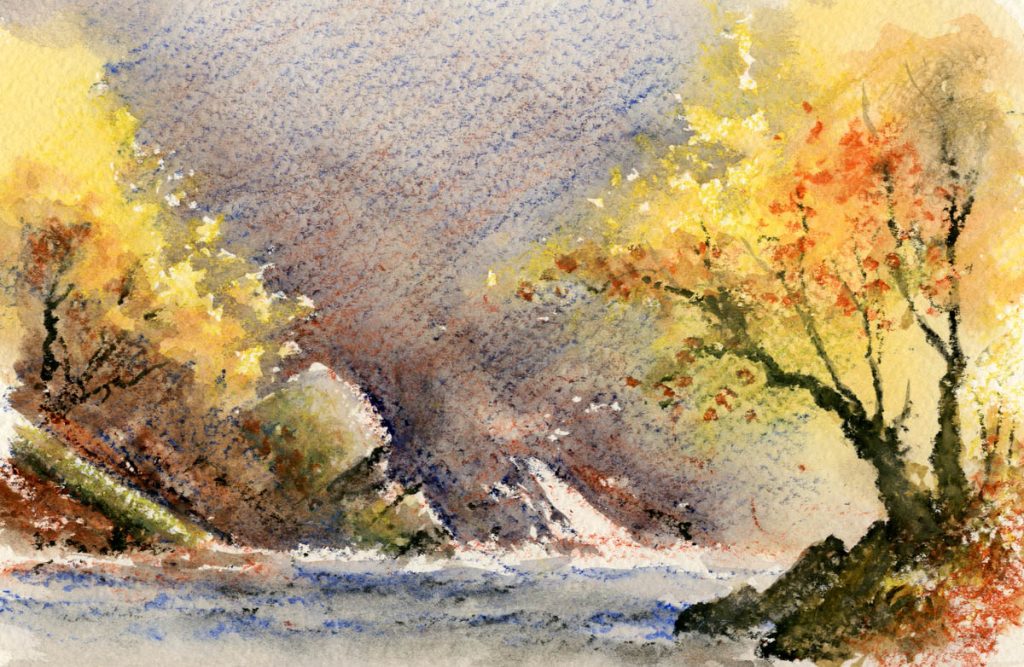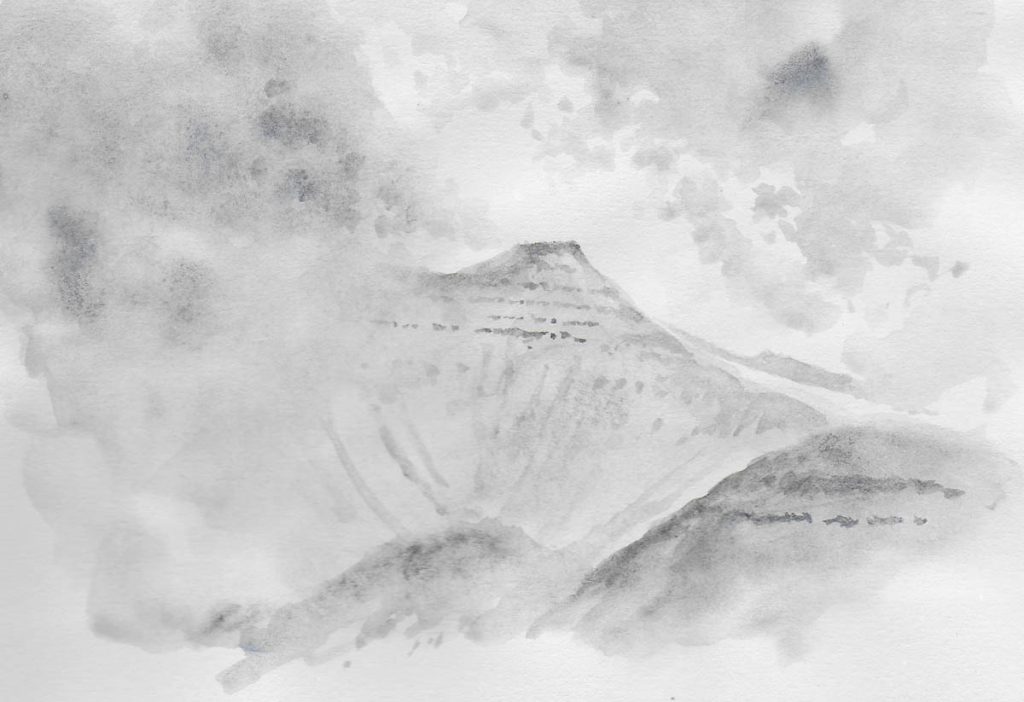For some time now I’ve been using the watercolour sticks produced by Daniel Smith, mainly for sketching out of doors. They make a great addition to my sketching gear, and although I still love using the half-pans in the great outdoors, the sticks provide a rapid method of capturing a colour rendition of a scene. Lovely rich colour peels off the sticks effortlessly with a brush, but you can also use them directly onto the paper. As I use the robust Saunders Waterford watercolour papers they can take quite rough treatment whether you apply the sticks onto wet or dry paper.

This is a rapid sketch of the Edw Gorge done whilst standing beside the river and applying colour direct from the sticks onto Saunders Waterford rough paper, then applying water with a large Pentel Aquash brush. These brushes hold their own water, so there’s no messing about with pots. I laid French ultramarine over the background, mixing in quinacridone Sienna lower down. The foliage was painted with yellow ochre plus Bismuth Vanadate Yellow in places. I then washed over it all with the Aquash brush. While the foliage was still damp I added quinacridone Sienna dirctly with the stick. To achieve sharper and more accurate detail I then picked up colour off the sticks with the brush and painted in the rock detail and trunks and branches, using lunar black for the very dark details, including some mixed into the river with French ultramarine. It was all over in a few minutes.
I shall be demonstrating how to use these sticks at Erwood Station Gallery & Craft Centre on Friday 7th June when I will be signing copies of my new book David Bellamy’s Complete Guide to Landscapes. Action starts at 2pm and I will be there till 4pm so do come along and join in the fun. Erwood Station is a great place to hang out, enjoy a cappuccino and they have the most delicious cakes and pastries! I’ll also have framed and unframed paintings at a discount, but do come and have a look at these magical painting sticks and ask any questions. Erwood Station is about six miles south of Builth Wells, just off the A470 from where it is well signposted. Telephone 01982 560555




